Acoustics & Metal
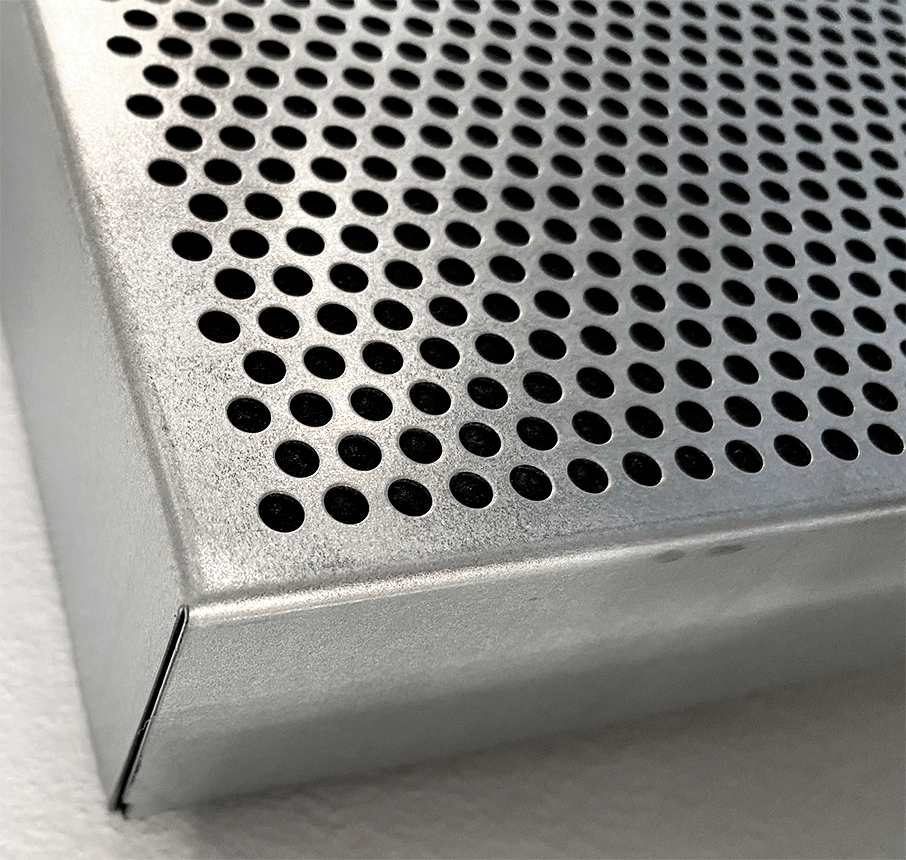
In the article ”what are good acoustics?” we described how hard surfaces create a long reverberation time and unpleasant acoustics. But how can metal, which has a reflective surface, be the main element in our acoustic solutions?
The answer to this question is (almost) simple.
Acoustic Absorbents
By making perforations in the metal’s robust surface, our products activate all three absorbent types: porous-, membrane-, and resonance absorbent. Since 1951 we have combined all three absorbent types and created acoustic solutions in high quality.
To get a better understanding of how our metal ceilings and wall panels can be acoustic, we will take a further look at the different absorbent types.
Porous Absorbent
A porous absorbent consists of fibers, which start to move, when they are hit by sound waves. The sound waves will in this process be stopped and converted to heat through the moving fibers.
An example of places, which are filled with porous absorbents are clothing shops. Where one would experience different sounds and acoustics in other shops, the clothes (or porous absorbents) will lower the reverberation time significantly and make the shop a pleasant place to shop and stay.
Porous absorbent is effective in the high frequency areas as whistles, computer devices, screaming, glass breaking or nails on a chalkboard, however not the lower.
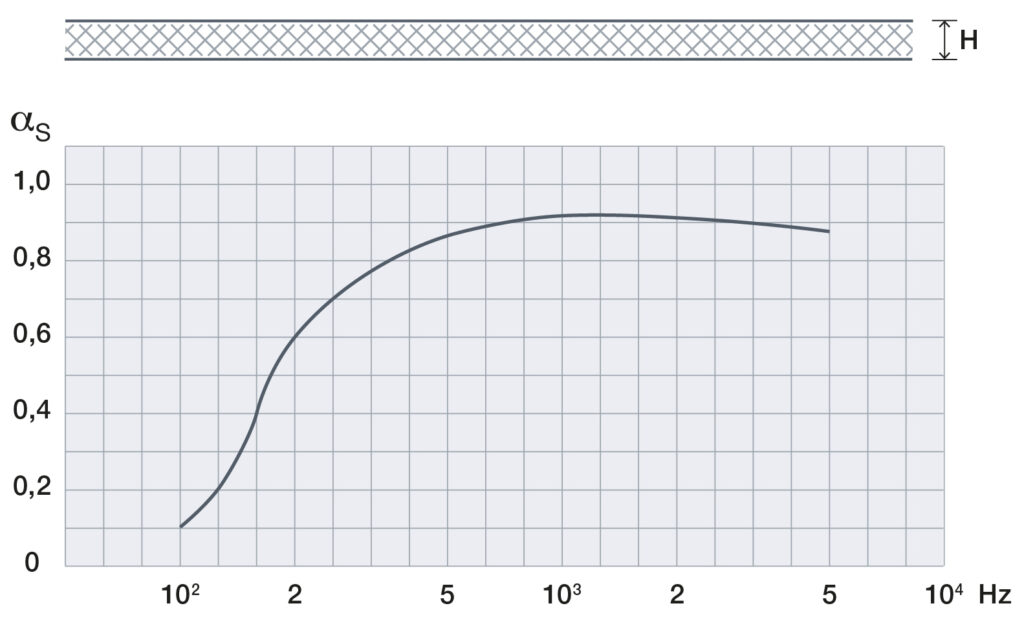
Membrane Absorbent
A membrane absorbent is created in the space between two slabs. For an example is the membrane absorbent created in the space between the unperforated area of our wall panels and the wall.
The air in the underlying space works as a spring and together with our metal sheet it constitutes a swinging system, which constantly search to neutralize the sound waves.
This absorbent is a contrast to the porous absorbent, and most effective in the low frequency areas, sounds as severe weather, sound waves that often sound “lower’ to the human ear, “rumbly” sounds that you feel as just as much as you hear.
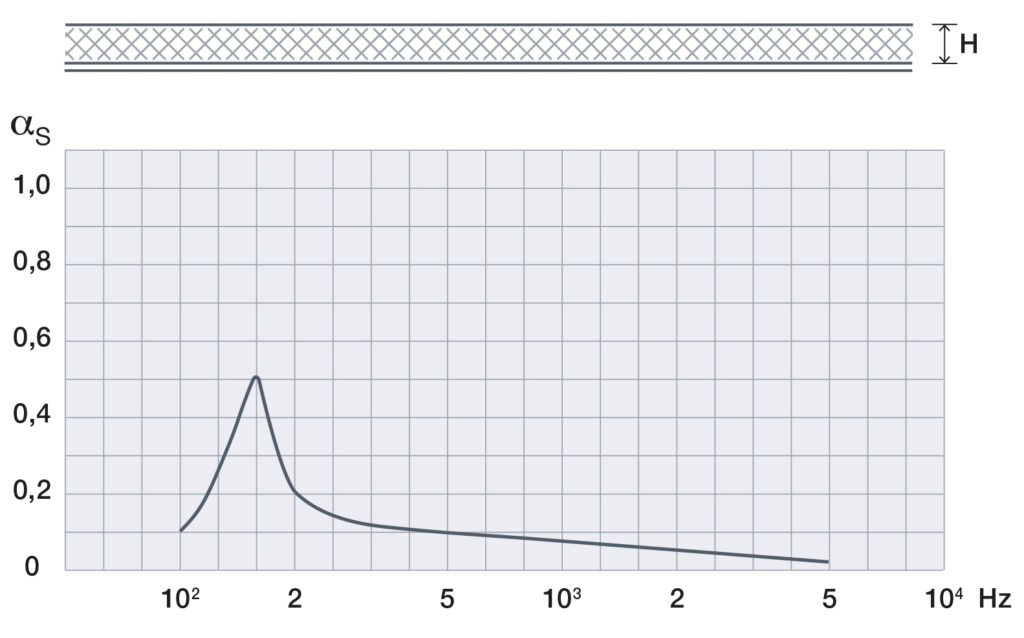
Resonance Absorbent
The last absorbent type is the resonance absorbent, which is a development of the above-mentioned membrane absorbent. The resonance absorbent is also using the hard surface, however this time it is the perforation and their edge which is the main element.
In these holes you will find “air-plugs”, which, when they are hit by sound waves, will make vibrations, which will be affected by the air or porous materials in the underlying space. The air or the porous material will work as a spring, which seeks to calm down the vibrating “air-plugs”. This vibrating system is created by the energy of the sound waves, and therefore the sound is no longer reflected back in the room.
Just as the membrane absorbent this absorbent is most effective in the lower frequencies.
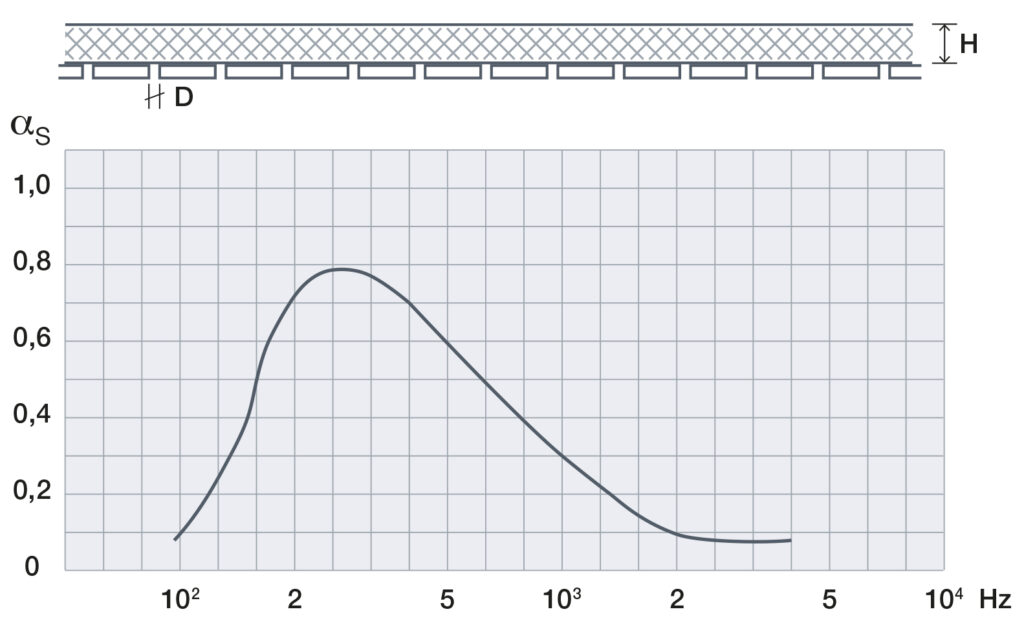
The Best from the Acoustic World
In our acoustic metal solutions, we achieve the best acoustic experience by using a perforated metal surface combined with a porous absorbent e.g., our acoustic felt. When combining these three different absorbent types we can create an acoustic solution which is customized to the use of the room and the users needs.
Robust Acoustic Solutions
It is not only because of the acoustics that metal is an ideal building material. By exploiting the metals robust qualities, it is possible, even in the bustling areas, to achieve long-lasting solutions – this is both an advantage for the planet and the operating budget.
At the same time, it is a hygienic material, which make our acoustic solutions to wall and ceiling ideally for hospitals, children institution, schools, restaurants and many more places, as it can easily be cleaned and wiped off.
Furthermore, the metal surface gives you a total freedom to design the surface as you wish, whatever it is going to be colorful or with digital print.
Metal – a Sustainable Building Material
Metal and sustainable does not often appear in the same sentence. When metal is produced from new it is a heavy material to extract while it uses a lot of energy and produces a lot of waste. However, when the metal is produced it can, with relative few resources, be recycled 100 % without leaving the circular orbit. At DAMPA we respect the materials and is always securing the right waste sorting at source, so we can secure that the material does not cease to exist.
Read more about our sustainability work.
Take Aways from the Article
- By making perforation in the metal, we can activate all three acoustic absorbents
- A Porous absorbent consists of fibers, which start to move, when hit by sound waves and this way stops the sound. For an example clothes, carpets, curtains etc.
- A membrane absorbent is created in the space between two slabs. The air in the space works as a spring, which neutralize the sound waves.
- The resonance absorbent is created in our perforation, where “air-plugs” make vibrations, when hit by sound and calms down the sound waves.
- When combining all three absorbents we can create an acoustic solution, which is perfectly matched to the use of the room and needs of the users.
Related Articles
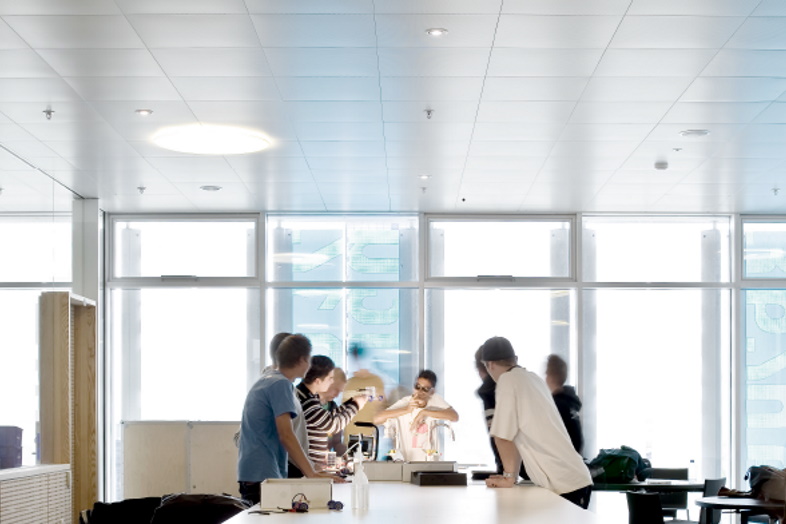
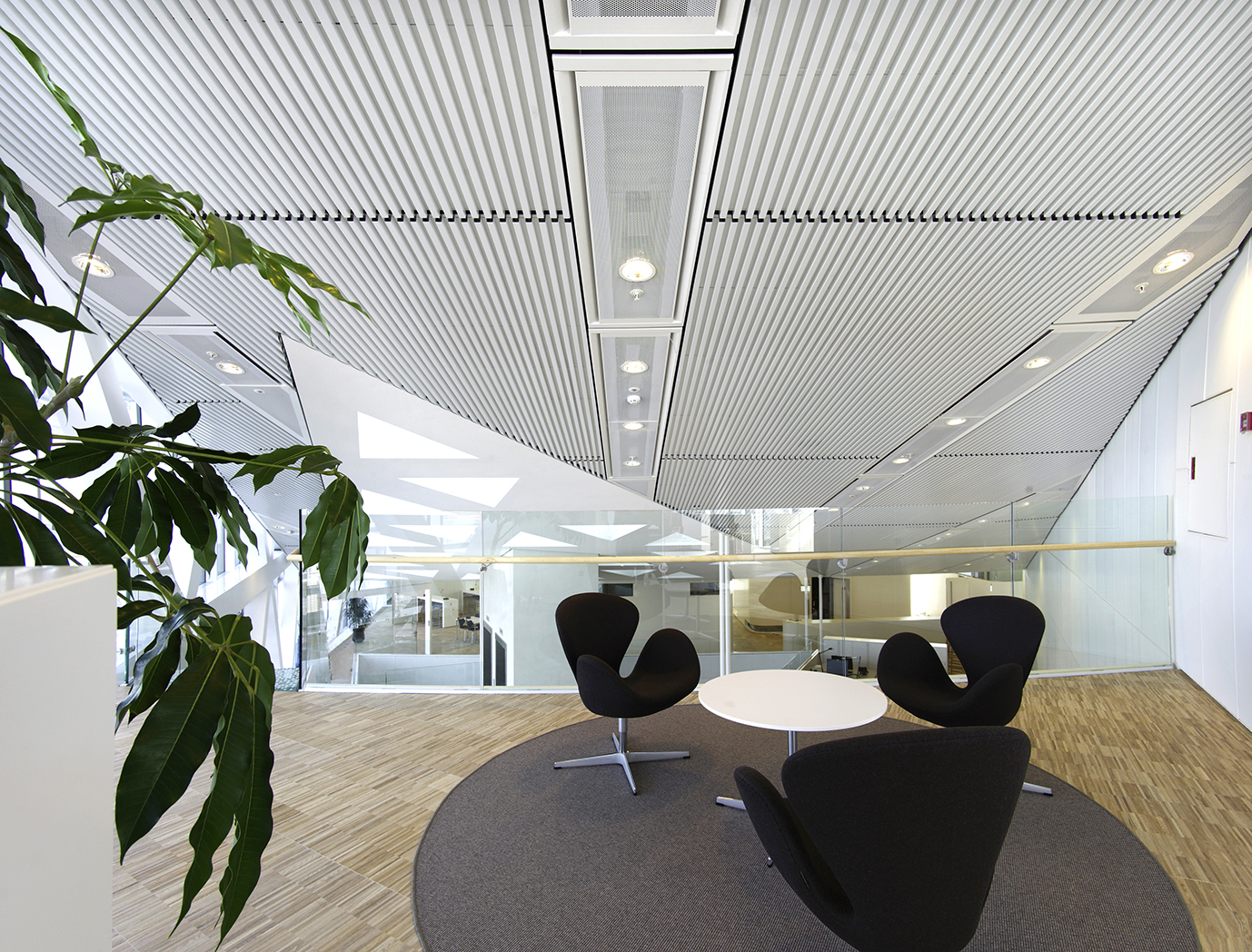
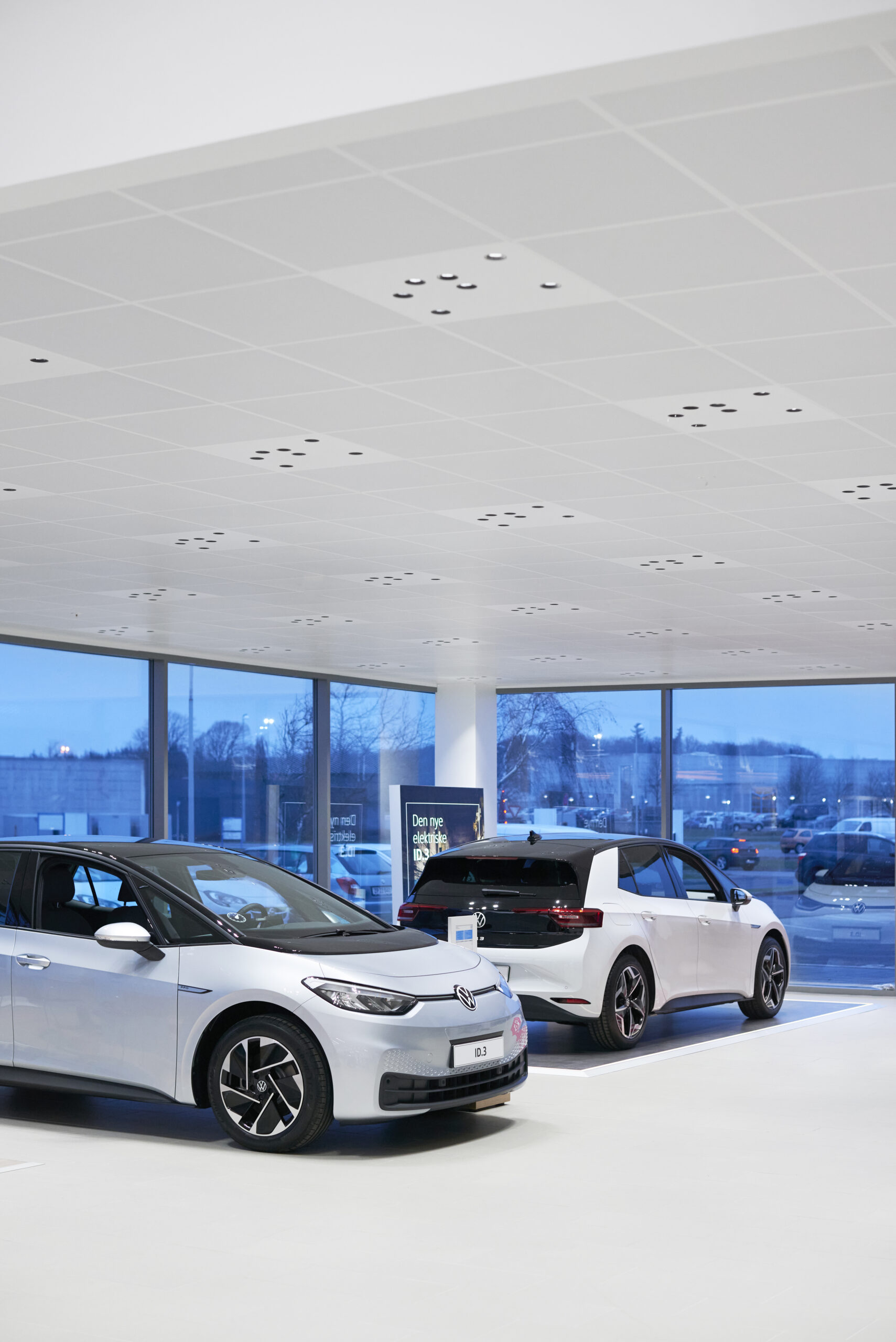

Not sure yet? get contacted for more information
Let our experienced team contact you to find the perfect ceiling solution for your project.